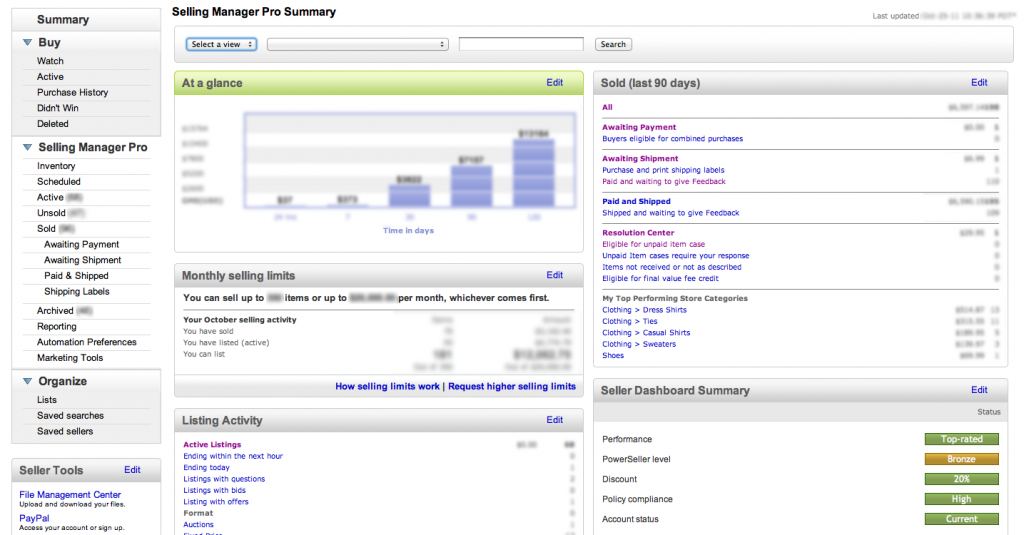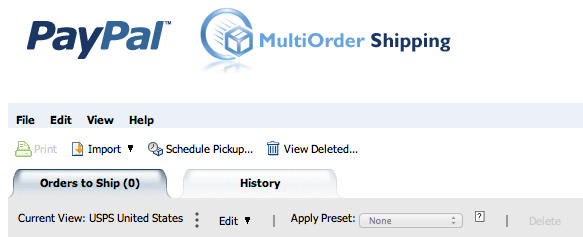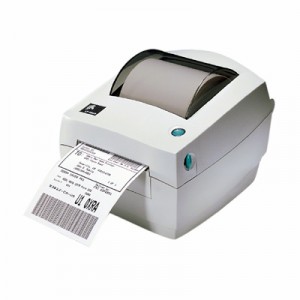Don’t even read this post. Just log back into eBay and pull the trigger on this thing. I’m dead serious. But if you’re curious as to why I’m so adamant about it, feel free to continue.

First of all, you can try it out free for 30 days. I went ahead and decided to give her a little taste, and within a few minutes I was immediately sold. Go ahead and let my credit card roll in the very minor $16 cost per month when my trial is up. It’s well worth it. Here’s why:
Organization – Once you enable SMP, you’ll immediately notice that your “My eBay” page has a whole new look. It’s now tailored to your role as a seller rather than a buyer. Notable features include the At A Glance Table, which shows your sales volumes over the previous 24-hrs, 7 days, 30 days, 90 days, and 120 days. Hell yes. You’ll also get a snapshot of your current Sold Items standings from the previous 90 days–what’s been sold, what’s awaiting payment/shipment, what’s in the resolution center (in case someone’s dropping the ball on payment), and how your product/inventory categories measure up (in case you also have an eBay store). Also awesome. You’ll also get a look at your listing activity, to-do’s and alerts, and be able to quickly manage your eBay store–I particularly like that it shows you who actually subscribes it. All extremely handy information that you’re interested in the moment you log in to eBay.
*Note: Most of these features are also available in the “Selling Manager” option, which is free. At the very LEAST, you should enable the basic selling manager.
Bulk Edits – Did you accidentally set all of your listings to allow international shipping? Need to change the handling time to 3 days instead of 1? Maybe you picked the wrong Product Category for a handful of your listings? No big deal. Now you’ve got a little check box next to each of your active listings, which allows you to select multiples and then choose Edit… –> Edit Selected (#)…. From there you can change just about any aspect of those listings. Or all of your listings. Instead of taking up half of your day it only takes about 30 seconds. SHAPOW!
Automation options – Alright, this might sound like a bit of a cop out, but once you’re selling a lot of items it will be a huuuuuge help. You can create automated feedback options for your sold items–either when someone pays you for that item, or after they hit you with positive feedback first. You can list as many different variations of “THANKS!” as you want. Before using this feature, I pretty much included the same types of responses anyway. Sure, some buyers might deserve a little more personalized message than others, but at the end of the day it’s really just about the positive feedback stamp you’re providing each other. You can also create automated emails to the buyer when payment is received and their item is shipped, as well as schedule certain listing to automatically recur or relist if they don’t sell. Sweet right?
Sales Metrics – SMP also allows you to create business reports to analyze/measure your performance AND export your sales data to Quickbooks. When it’s time to put on your CFO hat, this information will be crucial. Now I’ll be honest, I haven’t used these features through and through (and I’m assuming PayPal does a great job integrating with Quickbooks as well), but I plan to cover this in more detail in a later post.
A couple other things you should know — if you are planning to have an eBay Store, you will automatically get Selling Manager Pro for free with a Premium Store Account. The thing is, a Premium Store costs $49.95 a month–whereas a Basic Store is only an additional $15.95. One of the main differences there is that your Fixed Price listings for a Premium store are only 5¢, while they’ll be 20¢ in the Basic Store. Depending on how many listings you plan to make each month…well, I’ll let you do the math, but it may make more sense to just go with the Premium guy.
Okay fine I’ll do the math. If you’re listing more than 120 Fixed Price items per month, you’ll save money with a Premium Account. The difference between a Premium Store ($49.95) and Basic Store + SMP ($31.90) is $18.05. You’ll spend 15¢ less on each listing with a Premium Store, so $18.05 / $0.15 is just over 120 listings. You’re welcome, and I need a drink.
More to come on this topic, I’m sure. For now, just do it, and if you’re digging it, be sure to check out the Selling Manager Pro User Guide.


